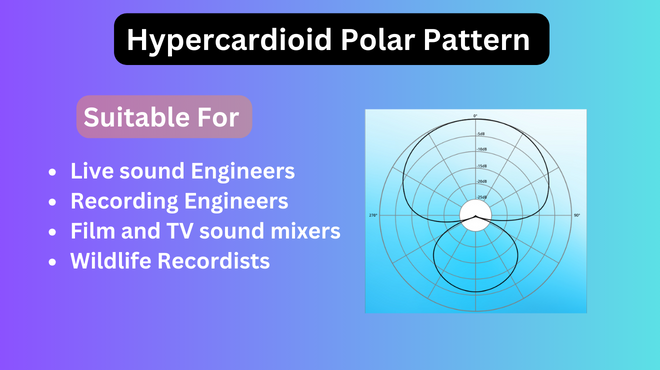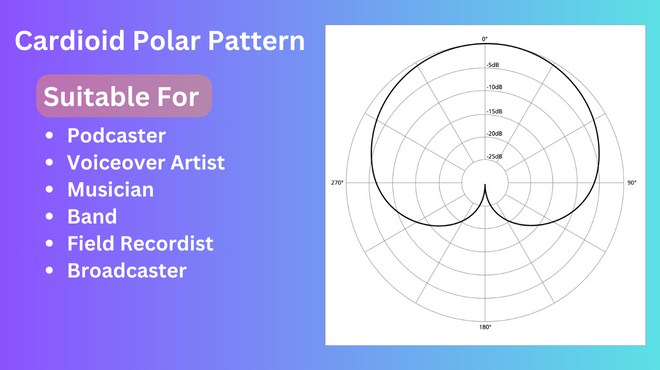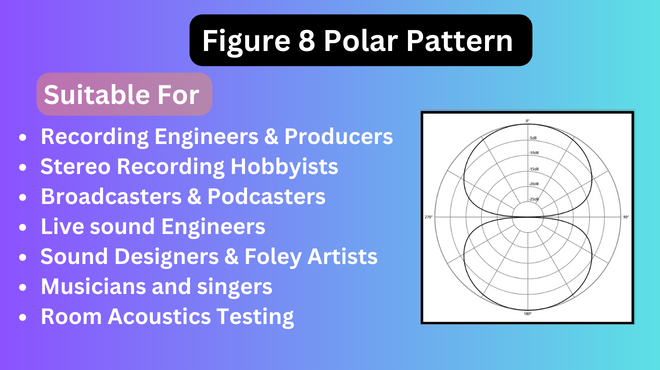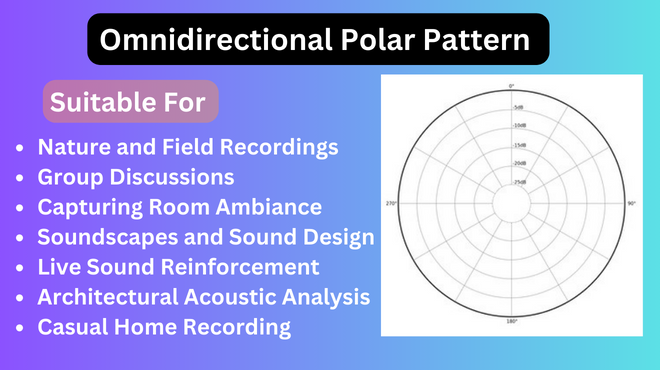Hypercardioid Polar Pattern technology has forever changed the way audio is recorded and amplified. Its development phases, history, and complex technological design tell a story of invention and accuracy that continues to influence how we record sound.
The quest for better directional control in audio capturing is where the narrative of the Hypercardioid Polar Pattern begins. Cardioid microphones are renowned for their focused front sensitivity and limited sound pickup from the sides and back. Over time, audio engineers and microphone designers worked to improve these qualities. Hypercardioid patterns pursue and indicate a natural advancement in audio technology came into being.
Stages of Development
Careful investigation and testing were required to perfect the hypercardioid pattern. Microphone engineers optimized internal sound wave manipulation, acoustic porting, and diaphragm design to produce a smaller and more focused directional pickup. These developmental stages allowed for a heightened degree of off-axis sound rejection, addressing the need for improved isolation in noisy environments and live sound applications.
Technical Structure
The center portion of the hypercardioid shape contains a more grounded capacity to choose up sound from the front and reject sound from the sides and back. Rather than the regular heart-shaped design, it picks up sound from a smaller range and blocks out the commotion coming from the sides and back. This happens by employing an extraordinary plan for the covering and portion of the amplifier as well as an innovation that makes a difference in sound quality. The receiver is outlined to pick up sound from one thing and piece out other clamors. The Hypercardioid Polar Design could be an accommodating strategy to oversee sound in sound innovation. It makes a difference to capture and make sounds louder in different areas.
What is a Hypercardioid Polar Pattern?
The Hypercardioid polar pattern is a microphone directional characteristic that focuses on capturing sound primarily from the front while significantly attenuating sound from the sides and rear, resulting in a highly directional and narrow pickup pattern.
Why should you use an Hypercardioid polar pattern?
Using a Hypercardioid polar pattern in audio recording is a strategic choice that offers several advantages in specific scripts. That is why you should consider using a Hypercardioid polar pattern.
Concentrated sound insulation: Hypercardioid microphones exceed at segregating sound sources in noisy surroundings. They have a narrow front volley angle and significantly hinder rejection, allowing you to capture the asked sound source while minimizing unwanted background noise and hindrance.
Off-Axis Rejection: These microphones give excellent rejection of sound from the sides and hinder, making them ideal for situations where you need to insulate a specific sound source, similar to a musical instrument or a speaker on a stage with other players.
Reduced Feedback: In live sound underpinning, Hypercardioid microphones are precious for minimizing feedback issues. Their directional nature helps sound from the stage observers or speakers from entering the microphone and causing feedback.
Ambient Noise: Control When recording in acoustically challenging surroundings or landing discourses in busy locales, Hypercardioid microphones allow you to concentrate on the primary sound source while reducing the influence of girding ambient noise.
Advanced Reverse Rejection: Compared to other directional patterns like cardioid, Hypercardioid microphones give indeed lesser hindered rejection. This is salutary when you want to capture sound from a single direction while ignoring sound sources behind the microphone.
Versatility: While Hypercardioid microphones are largely directional, they offer a bit further room for landing a broader area compared to shotgun microphones, making them protean for colorful recording and sound underpinning operations.
Precise Audio Capture: Hypercardioid microphones are frequently chosen for critical recording tasks where perfection and control over the audio source are essential. This includes plant recording, film and TV products, and landing discourses in grueling aural surroundings.
Which Microphones used Hypercardioid Polar Pattern?
Microphones with a Hypercardioid polar pattern are used across colorful orders for different operations. Then are some categories of microphones that generally feature the hypercardioid pattern, along with recommendations for some best-known microphones in each order.
- Vocal Microphones:
- Audix OM2: A legendary dynamic microphone used for a wide variety of stage, home, and studio applications.
- 512 Audio Limelight: A high-quality dynamic vocal microphone featuring a Hypercardioid Polar Pattern Designed for Podcasting, Broadcasting, and Streaming
- Audio-Technica MB 3k: Standout performance microphone for lead, backup, and choral vocals.
- Instrumental Microphones:
- Audio-Technica ATM230 : A dynamic instrument microphone with a hypercardioid pattern, designed for close-miking toms and other percussion instruments.
- Shotgun Microphones (Film and Video):
- Audio-Technica AT4053B: A budget-friendly option for shotgun microphone applications in video and film production.
Who benefits the most from a hypercardioid polar pattern?
Live sound engineers: Live sound engineers record vocals and other instruments on stage using this hypercardioid mic pattern.
Recording engineers: In the studio, recording engineers record vocals, percussion, and other instruments using a hypercardioid microphone pattern.
Film and TV sound mixers: are used to record dialogue and other sounds for productions of movies and television shows.
Wildlife recordists: Hypercardioid microphones are used by wildlife recordists to capture animal sounds in their natural environments.




